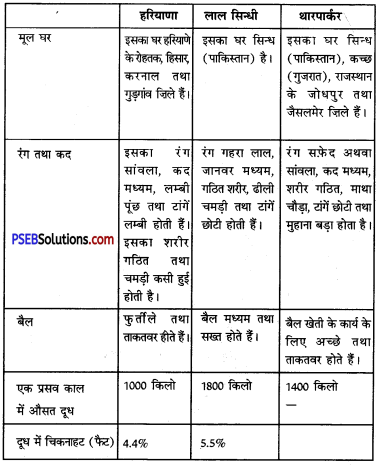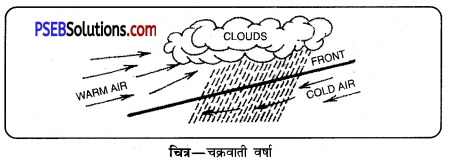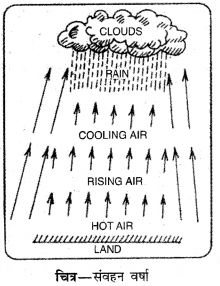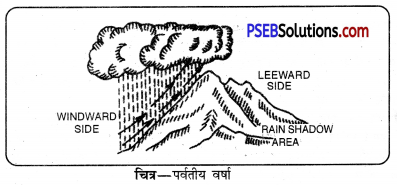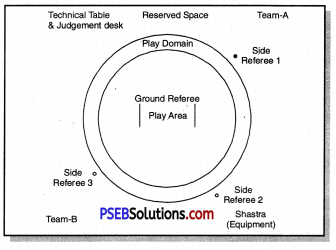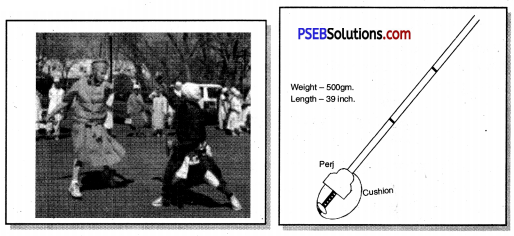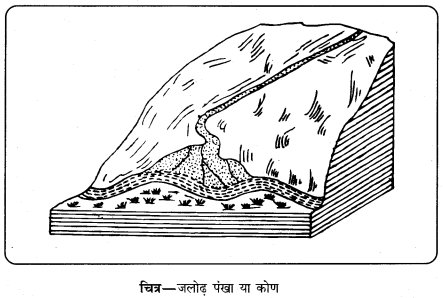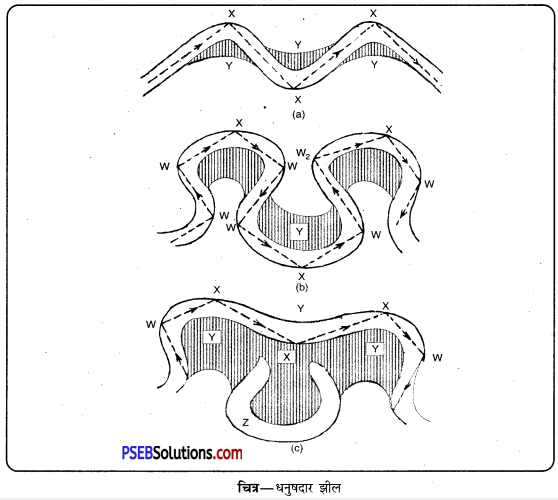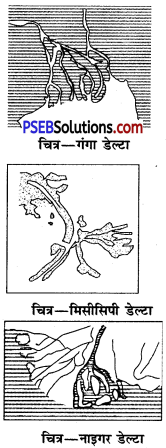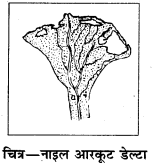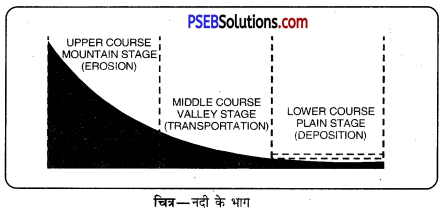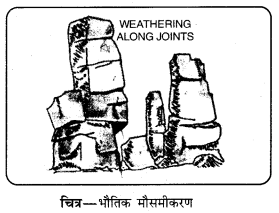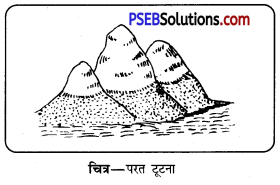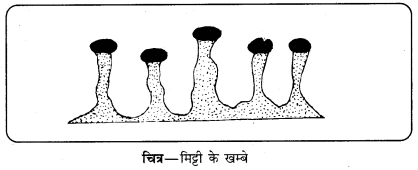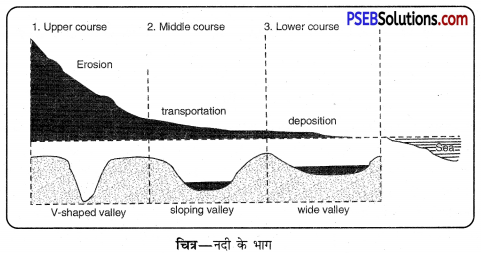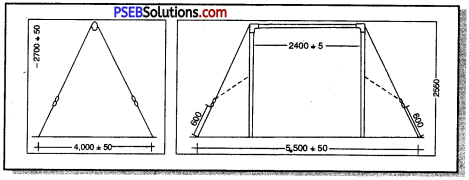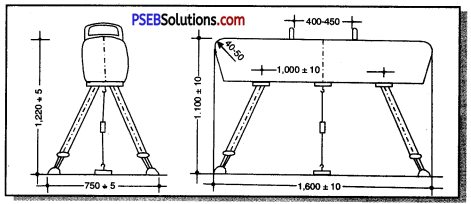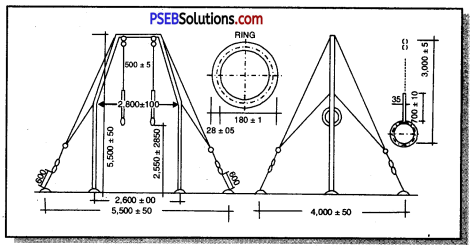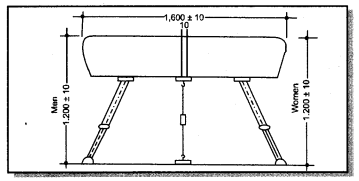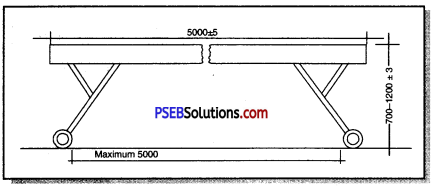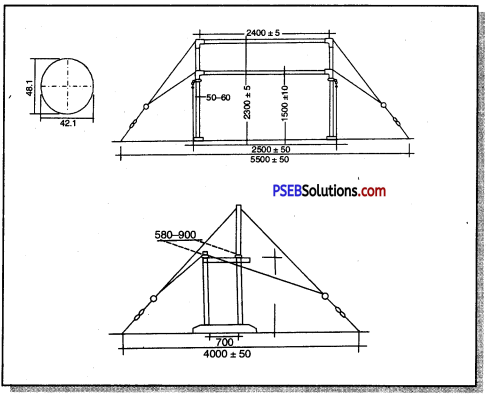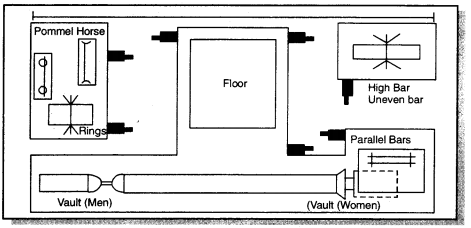Punjab State Board PSEB 11th Class Political Science Book Solutions Chapter 12 Form of Governments: Parliamentary and Presidential Textbook Exercise Questions and Answers.
PSEB Solutions for Class 11 Political Science Chapter 12 Form of Governments: Parliamentary and Presidential
Long Answer Type Questions
Question 1.
What is a Parliamentary System? Discuss its essential features.
Answer:
What is a Parliamentary form of government? Parliamentary type of government is also called Cabinet government or Responsible government. In this form of government there is a nominal head of the State and all executive powers are exercised by a Cabinet or ministers. These ministers are usually members of the legislature. They are individually and collectively responsible to the legislature for their action and policies.
They attend the meetings of the legislature and answer the questions put to them by the members of the legislature. If the legislature passes a vote of no-confidence against them, they resign their offices. Other members who possess the confidence of the legislature are then appointed as ministers. The members of the Cabinet are usually selected from among the legislators or the party or parties which command a majority in the legislature.
Each minister is incharge of one or more, departments. Garner observes, “Cabinet government is that system in which the real executive the Cabinet or Ministry is immediately and legally responsible to the legislature or one branch of it. (usually the more popular chamber) for its legislative and administrative act and ultimately or politically responsible to the electorate, while the titular or nominal executive the chief of the State-occupies a position of irresponsibility.
Parliamentary system had its origin in Britain and now most of the countries have adopted it. India, England, Canada, Denmark, Australia, Belgium, Japan, Bangla Desh and so many other countries have adopted parliamentary form of government.
Features Of Parliamentary Government:
The important features of Parliamentary government are as follows:
1. Head of the State is a Nominal Executive:
There is a titular executive head of the state either elected for a definite time or a hereditary monarch. Almost all the executive powers of the government are vested with the head of the State but it is only in theory and in practice all these powers are exercised by the real executive.
The nominal head of the State always acts on the advice of the council of ministers. The head of the State cannot do anything at his own initiative. In fact it is the council of ministers which exercises the power of the head of the State. The head of the State cannot do anything without taking the council of ministers into confidence.
2. Close Relationship between Executive and Legislature:
There exists a close relationship between the Cabinet and the Legislature. All the members of the cabinet are the members of the legislatures. They attend the meetings of the legislature and answer questions put to them by the members of the legislature. If an outsider is oppointed a minister he must become the member of the legislature within a definite period otherwise he ceases to be the member of the council of ministers. The ministers pilot the bills and see that they are passed. They are legislators as well as administrators.
3. Responsibility of the Cabinet:
The responsibility of the Cabinet means that so long as it enjoys the confidence of the legislature, it remains in power. Whenever the majority party is turned into minority or a vote of no-confidence or a vote of censure is passed against the government, it must go out and give place to the party which can then command majority. The council of ministers always acts in accordance with the wishes of the legislature.
4. Tenure of the Cabinet is not Fixed:
The tenure of the council of ministers is not definite. They can remain in office till the legislature wishes them to remain in office. The legislature can remove the members of the council of ministers from their office. If the majority of the members of the legislature passes a vote of no-confidence against the cabinet, then cabinet will have to resign.
5. Leadership of the Prime Minister:
In parliamentary system, Cabinet works under the leadership of the Prime Minister. Leader of the majority party in the Lower Chamber is appointed as the Prime Minister of the country and all other ministers are appointed by him. The head of the State neither appoints ministers of his own accord nor he can ask them to quit the office.
The Prime Minister selects his colleagues from among the members of his party and the President approves them. He forms the Cabinet, he can alter it, he can destroy it altogether. If he resigns, the whole Council of Ministers goes out of office. He summons the meetings of the Cabinet and presides over them. He can ask any minister to resign.
6. Political Homogeneity:
Cabinet works as a unit. But it can work as a unit only when all ministers in the Council of Ministers are taken from the single political party. The Prime Minister includes all the “big guns’ of his party in the Council of Ministers.
7. Secrecy:
Proceedings of the Cabinet are confidential. No minister can give publicity to the proceedings of the Cabinet. The decision of the Cabinet can be disclosed only by a minister authorised by the Prime Minister. At the time of the assumption of the office, every minister takes the oath of secrecy.
8. Dissolution of the Lower House:
One of the important feature of the Indian and British parliamentary government is the right of the council of ministers to dissolve the Lower House of the Parliament. On 26th April, 1999 President K. R. Narayanan dissolved Lok Sabha on the advice of Prime Minister Atal Behari Vajpayee.
![]()
Question 2.
Discuss the merits and demerits of Parliamentary government.
Answer:
Merits of Parliamentary Govt. Following are the merits of Parliamentary government:
1. It is more Democratic:
The great merit of the parliamentary government is that the people have share in this type of government and the representatives of the people exercise real authority. The members of the Cabinet are the real executive and they are selected from among the members of the legislature and are responsible to the legislature for all their actions and policies. In short, the representatives of the people are the rulers and they are responsible to other representatives. The ministers are to run the administration of the State in accordance with the wishes of the people.
2. Harmony between Executive and Legislature:
There is harmony between the executive and the legislature in a parliamentary type of government. All the laws introducted by the Cabinet are bound to be passed because they possess a majority in the legislature. On the other hand, the Cabinet works in accordance with the desires of the legislature because it can be removed from the office by a vote of no-confidence, passed in the legislature. In short, under this system there is no difference between the law-makers and Cabinet ministers who enforce the laws because both are inter-dependent on each other and work in harmony.
3. Responsible Government:
The Cabinet government is a responsible one and it cannot behave dictatorially. The members of the legislature ask questions and supplementary questions to the members of the Cabinet. They criticise the working of different departments on the floor of the House. In case the legislature indicates a loss of confidence over the Council of Ministers, the ministers are to resign. It is why the ministers always act in accordance with the wishes of the people. They cannot afford to go against public opinion. The government in this system always remains responsible to the legislature which is directly elected by the people.
4. Strong Government:
In a Cabinet government there is a strong administration. The government can enforce its policies strongly and vigorously. It is an age of political parties and the leader of the majority party is appointed the Prime Minister of the country. The Prime Minister selects other ministers from among the members of his party in the legislature. As the Cabinet is confident of its majority in the legislature, so it can act effectively. It has the support of the majority of the members in the legislature.
5. Timely Change in Government:
It is a great merit of parliamentary government that it changes when the time demands it so. The Cabinet is changed when the change is inevitable. During the .general elections the people get an opportunity to seek a change in the Cabinet. The change of Cabinet can be sought by passing a vote of no-confidence over it by the legislature. During the Second World War it was the Conservative Party which ruled Britain, and it conducted the war very successfully.
But after the war was over the people of Britain voted the Labour Party in power and not the Conservative Party. The parliamentary system is flexible in nature. Under this system the government can be changed and moulded in accordance with the desire of the country. Moreover, under this system in war times the election can be easily postponed for some time in national interest.
6. It is more Responsive to the Public Opinion:
Parliamentary government is more responsive to public opinion. The reason for this is that the administration under this system of government comes under terrible criticism. The majority party forms the government and the minority parties or opposition parties keep a strict watch on it.
They criticise the wrong actions of the government. The opposition parties bring the weakness of the government to light and try to win public opinion to their side. The ministers are always afraid of the criticism by opposition parties and hence they do not do any such thing which is not liked by the people.
7. It is more Educative:
Under the parliamentary system of government the masses get more political education than under the Presidential system. Under this system the people are always interested and take active part in the affairs of the government because they think that their criticism has an effect on the policy of the government.
It is the majority party which gets an opportunity to form the government. During elections each political party strives hard to get the maximum votes of the people in order to have a majority in the legislature. Each party tries to attract voters by advocating its view-point on the various problems of the State. In criticises the policies of the government and brings to light the wrongs committed by the government. It offers solutions to the problems facing the country.
No individual can keep himself aloof from the happenings in the country. Even after elections each political party from time to time discusses national or local problems with the people. All these things provide political education to the people.
8. Government of able Statesmen:
Parliamentary government is called the aristocratic government of modern age. In this system of government the authority remains in the hands of capable men. The leader of the majority party is appointed the Prime Minister and all other ministers are selected by him. It is essential that the Prime Minister should be equipped with all the qualities which are required to run the administration of the State quite successfully.
The ministers are taken from among the members of the legislature. Only the capable and experienced persons are selected to be appointed as ministers. If inexperienced and incapable persons are selected as ministers, they cannot run the administration efficiently. People elect only those people who are popular and are capable to participate in the proceedings of the legislature.
Demerits Of Parliamentary Government:
Following are the demerits of Parliamentary government:
1. It is against the theory of separation of powers:
The theory of separation of powers lays emphasis on the point that concentration of powers in the same hands is harmful. But in the parliamentary government the executive and legislative powers are concentrated in the same hands.
The members of the council of ministers make laws as well as run the administration of the State. There is always a danger that ministers may not frame laws which are not in the interests of the people. As the ministers belong to the majority party in the legislature, with its support in the legislature they may not assume dictatorial powers.
2. Dictatorship of the Cabinet:
Under certain circumstances, a Cabinet government may develop dictatorial tendencies. The fear of a new type of despotism arising in the Cabinet system cannot be ruled out. This may happen when the Cabinet belongs to a party which has an overriding majority in the legislature and opposition parties in the legislature are weak and divided.
In such a situation, the Cabinet exercises immense powers being supported in all its policies by members of its own party, the members of which do not try to evaluate these measures on merit. Further the power of the leader ‘of the Cabinet to propose a dissolution of the legislature, very often compels the legislature to support legislation which otherwise they would not favour. Cabinet rule is thus likely to result in a new despotism, a tyranny of the majority party.
3. Unstable Government:
The Government is always unstable in this form of government. This is simply because the Cabinet is responsible to the legislature and it can be removed by a vote of no-confidence passed by the legislature against it. Due to this instability, the government cannot make long term plans for the welfare of the masses.
In practice it has been estimated that the average life of the Cabinet in France is only eight months and in England nearly three years. The stability of the executive is very much threatened especially when no political party can command a majority in the legislature. The whims and fancies of the legislature may throw out an otherwise efficient and competent Cabinet.
4. It lacks Efficiency:
The great defect of this form of government is that it lacks efficiency. The rulers are always over-burdened with work and they cannot do it efficiently. The ministers are to perform various functions. They are to supervise the working of their own department and are to run the administration. They are to attend the meetings of the legislature and are to answer questions put to them by the members of legislature.
They are to pilot the bills and see them through. They answer the criticism of the legislators. They are to remain in touch with the people, because in the next election they are to seek their votes. They are so much over-burdened with work that they cannot attend to the governmental work properly.
5. Weak in time of Emergency:
The parliamentary government is very weak in times of great emergenices like the war or foreign attack or internal disturbance. This is simply because under this system, the Cabinet will have to get the consent of Parliament, or legislature before taking any strong action against the aggressors.
The long discussion of the ministers or of the legislature may ruin the country. Sometimes the ministers differ among themselves on the solution to certain serious problems. Sometimes the members of the Cabinet fail to reach a decision and the fate of the country hangs in the balance. Under these circumstances the country fails to meet the emergency successfully.
6. It is a Party Government:
The parliamentary government is essentially a party government. The party which gains majority in the legislature forms its own government. Therefore all the political parties organise themselves politically and if a member violates the discipline of the party, disciplinary action is taken against him.
As the political parties are well-organized, so the individual members lose their individual liberty and they cannot express their opinions freely. The political parties want all the members to remain loyal to the party. This way the people are always divided into various groups and factions.
Conclusion:
The parliamentary from of government has its merits and demerits. Some of the demerits of this form of government are most undesirable. The ministers sometimes are incapable and this government is weak in emergencies. The political parties do have some evil influence upon the people, but a democratic government cannot be run without the existence of political parties. In this system of government the administration is responsible and always respects public opinion. Most of the countries have adopted this form of government.
![]()
Question 3.
What is a Presidential System? Discuss its essential features.
Answer:
As against the parliamentary system there is a Presidential type of government which exists in U. S. A. By this government we mean that type of government in which the executive is not responsible to the legislature. Under this government the head of the State appoints his own advisers for the performance of his functions. Neither the President nor his secretaries are the members of the legislature.
They never attend the meetings of the legislature and are not responsible to it for their actions and policies. The President is appointed for a fixed term. He is boss of his secretaries and they are his servants. In fact there is a complete divorce between the executive and the legislature.
1. According to Dr. Gamer, “Presidential government is that system in which executive (including both head of state and his ministers) is constitutionally independent of legislature in respect to the duration of his or their tenure and, to large extent, as to his policies and acts. In such a system the Chief of a state is not merely the titulor executive but he is the real executive and actually exercises his power which the Constitution and laws confer on him.”
2. According to D. V. Verney, “The term Presidential has been chosen because in this system the office of the Head of Government and Head of the State are combined in the President.”
3. According to E. Asirvatham, “The Presidential system of government is that in which the executive is constitutionally independent of the legislature in respect of the duration of its tenure and irresponsible to it for its Political Policies.”
4. According to Gettel, “Presidential Government is that form in which the chief executive is independent of the legislature as to his tenure and to a large extent as to his policies and acts.” Presidential Govt, exists in U. S. A., France, Sri Lanka, etc.
Features Of The Presidential Government:
The important features of Presidential type of government are as follows:
1. Real Executive:
The head of the State in a Presidential type of government is the real executive and not a nominal one. He is the effective executive head of the State. Whatever are allotted to the head of the State, he exercises them effectively.
2. Cabinet is only an Advisory Body:
In a Presidential form of government cabinet is merely an advisory body. President is not bound to accept the advice of the cabinet. His secretaries and can rule in accordance with his own wishes. It is entirely his sweet will whether to consult his secretaries or not on a certain issue.
3. Separation of Executive and Legislature:
Under Presidential type of government, the executive is not dependent upon the legislature. It means that there is complete divorce between the executive and the legislature. If the legislature does not approve the action of the executive, it cannot remove the executive by a vote of no-confidence passed by the members. Neither the President nor his secretaries are the members of the Congress in U. S. A. The secretaries do not attend the meeting of the legislature and so do not participate in the proceedings of the House.
4. Irresponsibility of the Executive:
In a Presidential type of government the executive is not responsible to the legislature. The legislature in any way does not control the executive. The legislature cannot compel the executive to do particular thing. In other words, the legislature cannot dictate terms to the executive. The members of the legislature can ask questions to the executive only in writing. The ministers may or may not answer the questions, it entirely depends upon their sweet will.
5. Tenure of the Executive is Fixed:
In a Presidential type of government the tenure of the executive is fixed and the legislature cannot remove it from office. The secretaries are appointed by the President and for their actions and policies, they are responsible to the President. It is the President who can remove his secretaries from office.
6. President cannot dissolve the Parliament:
Presidential government is based on the theory of separation of powers. Hence the President has no power to dissolve any house of the legislature. The tenure of the legislature is fixed and it cannot be dissolved before the expiry of the term.
7. Political Homogeneity is Unncessary:
In a Presidential form of government it is not essential that all ministers should be taken from one party. It is because ministers are individually responsible to the President and there is no principle of collective responsibility.
![]()
Question 4.
Discuss the merits and demerits of presidential government.
Answer:
Merits Of Presidential Government:
Following are the merits of Presidential form of government:
1. Stable Government:
The government is stable in a Presidential type of government and it does not change frequently. The President exercises his authority himself and appoints a few secretaries for his assistance. The government is always stable because the term of office of the President is fixed by the Constitution. For instance, the President holds the office for a period of 4 years in America. The stability of government brings some definiteness and certainty in policy for running the administration of the country honestly and efficiently.
2. Efficiency in Administration:
The Presidential form of government is based on the theory of separation of powers. The secretaries neither contest elections nor they participate in the deliberations of the legislature. Their main function is to run the administration of the State. They run the administration neither under the dictation of the legislature and nor according to the dictates of the people. They run the administration quite independently. It is but natural that under such conditions the administration would be quite efficient.
3. Administration by able Statesman:
In this form of government the ministers are not the members of legislature. The President appoints only those persons as his secretaries who are experienced persons and can prove able administrators. He only makes appointments of so many federal officers and only those persons are appointed to these posts who can run the administration quite efficiently and smoothly.
In this system of government the secretaries can be taken from all the political parties. These secretaries run the administration quite independently and bother a little about the criticism of the legislature. Almost all the time the secretaries are busy in the work of the government. .
4. Suitable in time of Emergency:
The Presidential from of government suits the best at the time of emergency, because all the powers are concentrated in the hands of the President and he can use them quite effectively. The President can use his authority in whatever way he likes. He is not required to consult the legislature. The legislature may or may not like the action taken by the President to meet the emergency, the President can have his own way. The decisions are taken very promptly and the decisions are carried out very effectively. In a parliamentary type of government it takes time to take a decision.
5. Less Possibilites of Bad Effects of Party Politics:
In the Presidential form of government there is no such party split. The only function of the executive is to run the administration for the best interests of the society. The parties in the legislature do not have much conflict because they cannot change the government by passing a vote of no-confidence. Thus under a Presidential system the legislature also passes those laws which promote national welfare. In fact the Presidential system can be regarded as above party politics.
6. It is based on the Theory of Separation of Powers:
The Presidential form of government is based on the theory of separation of powers. The legislature is not controlled by the executive. Both the executive and the legislature are quite independent in their own sphere. .
7. Suitable for a Multi-Party System:
In a country where no party gains absolute majority and each party has captured some seats in the legislature, this system of government is very successful. If there is a multiple-party system, the parliamentary government cannot be a success because the government changes frequently. In a Presidential form of government, it is only during Presidential elections that the parties are active, and afterwards they become passive and hence the government does not change hands so frequently.
Demerits Of Presidential Government:
Following are the demerits of Presidential form of government:
1. Autocratic and Irresponsible Government:
In a Presidential type of government, neither the President nor his secretaries are the members of the legislature. They do not attend the meeting of the legislature. They are not to answer the questions on the floor of the House. They are not responsible to the legislature for their actions and policies. The President is their boss and they are his servants. The secretaries are responsible to him for all their actions and policies.
Under the Presidential system, the secretaries can become dictators in the exercise of their powers. This is simply because the secretaries cannot be removed from their offices by the legislature after passing a vote of no-confidence against them. The absence of this responsibility makes the executive officers at a superior position as a result of which they can become dictators for the administration of government, though for a limited period.
2. It does not Change according to Time:
Presidential system is rigid because the tenure of the President is fixed by the Constitution. This system is defective because the people will have to tolerate the Head of the State whether he is good or bad and they cannot change him before the fixed period.
It is due to the rigidity of the Presidential system that the elections could not be postponed in U.S.A. during Second World War. If instead of President Roosevelt, another man had come to power, America would have suffered great loss. The Presidential system is defective because it cannot adjust itself in accordance with the changing requirements of the country.
3. Possibility of Deadlock of the Government:
This form of government is based on the theory of separation of powers. The executive and legislative organs of the government are separated from each other and there is no close relationship between the two. This separation between the executive and the legislature leads to disputes and deadlocks.
The possibility of deadlocks increases when the President belongs to one party and the legislature has the majority of the members of another party. Under these circumstances the policy of the executive and the policy of the legislature differ widely. But the legislature and the executive will work independently. The national interest is bound to suffer if the deadlocks and disputes arise so often.
4. No Possibility of Good Laws:
There is no possibility of goods laws and hence the administration cannot be run smoothly. Good laws can be made only when the legislature and the executive work in close cooperation with each other. If the laws are not enforced with the same spirit with which they were framed, they cannot prove useful. Similarly if the laws are not framed according to the needs of government, the administration cannot be run efficiently. The peace and order cannot be maintained in the State properly under such circumstances.
5. Weak in Conduct of Foreign Relations:
The government cannot establish sound relations with foreign countries under this form of government. The reason for this is the legislature which has the power of declaring war and concluding peace. Moreover, all the treaties made with foreign countries by the executive are to be ratified by the legislature. The President is never sure about the the fact whether the legislature will ratify a particular treaty or not. Even if the approval of legislature for the treaties entered into with foreign countries is not essential, the laws are required for enforcing these treaties and they are to be passed by the legislature.
6. Rigid Constitution:
Due to rigidity of the Constitution presidential government is not changeable according to needs and circumstances. Everything happens in accordance with the provisions elaborately prescribed by the Constitution. No danger, no crisis can melt the inflexible Constitutional rules.
7. Public Opinion Neglected:
In a Presidential government chances of neglecting the public opinion is more because President and ministers are not responsible to the legislature.
8. Separation of Powers is not Practicable:
Presidential form of government is mainly based on the idea of separation of powers among the organ of the government. But practically separation is neither possible, nor practicable nor desirable. In fact the strict separation of powers is not found in any country of the world.
![]()
Question 5.
Distinguish between Parliamentary and Presidential forms of Government.
Answer:
The Parliamentary and Presidential governments differ from each other in a number of important respects. In India and Britain Parliamentary forms of government have been adopted and U.S.A. had adopted Presidential form of government. Both the forms of governments differ on the points given ahead:
(a) Position of the Executive
(b) Relations between the Executive and the Legislature.
(c) Responsibility and Tenure of the Executive.
Following are the points of difference between the Parliamentary and Presidential forms of government:
(a) Position of the Executive
| Parliamentary Government | Presidential Government |
| Head of the State is a Nominal Executive | Head of the State is Real Executive |
| 1. The head of the State is a nominal one and the powers conferred on him by the Constitution are not exercised by him according to his own sweet will. In England, the head of the state is queen and in India the head of the State is President. Neither of the two exercise his/her authority according to his/her will. | 1. The head of the State is not the nominal executive but the real effective executive head of the State. He exercises his powers according to his sweet will. In U.S.A., the head of the State is President and he can exercise his authority according to his will. He selects ministers of his own sweet will. His tenure of office is fixed. |
| 2. There is a council of ministers to aid and advise the President. In fact all the powers of the head of the State are exercised by the council of ministers. The head of the State can do nothing without the advice of his council of ministers. | 2. There is a council of ministers to aid and advise the President. But the President is not bound to act on the advice of the council of ministers. He can do anything without consulting his ministers or even he can go against their advice. His ministers are merely his advisers. |
| 3. The President does not have a free hand in the case of the appointment of his ministers. The leader of the majority party is to be appointed Prime Minister by the head of the state and other Ministers are appointed on the recommendations of the Prime Minister. The head of the State cannot remove the ministers from office. | 3. The President has a free hand in the appointmentof his ministers. He can appoint any one as his minister and can remove any minister whenever he likes. He is not required to seek the advice of anybody in the case of appointment and removal of his ministers. |
| 4. The head of the council of ministers is the Prime Minister and not the President. | 4. The head of the State is also the head of the council of ministers. |
(b) Relations between the Executive and the Legislature.
| Parliamentary Government | Presidential Government |
| Close relations between the Executive and the Legislature | Separation of the Executive and the Legislature. |
| The members of the council of ministers are taken from the legislature. | 1.The members of the council of ministers are not taken from amongst the members of the legislature. |
| 2.The ministers participate in the meetings of the legislature. They introduce bills, participate in discussions of the House and support their measures. They participate in voting on bills. | 2.The ministers do not attend the meetings of the legislature. They neither introduce bills nor deliver speeches in the house. They do not participate in voting on bills in the House. |
| 3. The head of the State calls the meeting of the legislature in accordance with the wishes of the ministry. | 3. The head of the State does not convene the meetings of the legislature. |
| 4. The executive can at any time seek the dissolution of the legislature and can order fresh elections. The council of ministers can advise the head of the State to do so. | 4. The executive cannot dissolve the legislature. The Lower Chamber continues to exist for a fixed and definite period. |
(c) Responsibility and Tenure of the Executive.
| Parliamentary Government | Presidential Government |
| Responsibility and Unfixed Tenure | Irresponsibility and Fixed Tenure |
| 1. The ministers are responsible for their actions to the legislature. | 1.The executive is not responsible for its actions and policies to the legislature. |
| 2. The members of the legislature can ask the ministers questions and they have to answer them. | 2. The members of the legislature can ask questions from the ministers, but they may or may not answer their questions. |
| 3. The tenure of the executive is not fixed. If the legislature loses confidence in the ministers they have to resign from office. | 3. The tenure of the executive is fixed. The legislature cannot remove the ministers from office. The head of the State appoints them and removes them from office. |
![]()
Short Answer Type Questions
Question 1.
What is a Parliamentary form of Government?
Answer:
Parliamentary type of government is also called Cabinet government or responsible government. In this form of government there is a nominal head of the state and all executive powers are exercised by a Cabinet of Ministers. These ministers are usually members of the legislature. They are individually and collectively responsible to the legislature for the their action and policies. They attend the meetings of the legislature and answer the questions put to them by the members of the legislature. If the legislature passes a vote of no-confidence against them, they resign their offices.
Question 2.
What are the merits of Parliamentary Government?
Answer:
- The great merit of the parliamentary government is that the people have share in this type of govt, and the representatives of the people exercise real authority.
- There is harmony between the executive and the legislature in a parliamentary type of govt.
- In a Cabinet government there is a strong administration.
- Parliamentary government is more responsible to public opinion.
Question 3.
What are the demerits of Parliamentary Government?
Answer:
- It is against the theory of separation of powers.
- Under certain circumstances, a Cabinet government may develop dictatorial tendencies.
- The government is always unstable in this form of government.
- The Parliamentary govt, is very weak in times of great emergencies like war or foreign attack or internal disturbance.
![]()
Question 4.
What are the merits of Presidential Government?
Answer:
- The government is stable in Presidential type of government and it does not change frequently.
- The Presidential form of govt, suits the best at the time of emergency.
- The Presidential government is based on the theory of separtion of powers.
- In a country where no party gains absolute majority, this system is very successful.
Question 5.
What are the demerits of Presidential Government?
Answer:
- Presidential system is rigid because the office of the President is defined by the Constitution. Therefore, it does not change according to time.
- In a Presidential government chances of neglecting the public opinion are more because President and ministers are not responsible to the legislature.
- There is no possiblity of goods laws and hence the administration cannot be run smoothly.
- The separation of powers leads to disputes and deadlocks.
Question 6.
What is Presidential Government?
Answer:
Presidential form of government is that government in which the head of the state and the ministers are constitutionally free from the legislature for their tenure. They are not responsible to the legislature for their policies. Thus the head of the state in a Presidential type of government is the real executive and not a nominal one. Whatever powers are allotted to the head of the state by the constitution, he exercises them effectively.
Question 7.
Mention the various features of parliamentary form of Government.
Answer:
Following are the features of parliamentary government:
- Head of the state is a nominal executive.
- Difference between re.al executive and nominal executive.
- Close relationship between executive and legislature. All the members of the cabinet are the members of the legislature and they attend meetings of the legislature.
- Cabinet is colloectiv.ely responsible to the legislature. So long it enjoys the confidence of the legislature, it remains in power.
Question 8.
Mention the various features of presidential form of government.
Answer:
Following are the features of presidential form of government:
- The head of the state is the real executive and not a nominal one.
- Cabinet is only an advisory body. President is not bound to accept the advice of the cabinet.
- Separation of executive and legislature, neither the President nor cabinet members are the members of the legislature.
- The executive is not responsible to the legislature.
Question 9.
What is the difference between Parliamentary Govt, and Presidential Government?
Answer:
- In Parliamentary Govt, the head of the State is a nominal one whereas the head of the state is real executive in residential Government.
- The head of the Council of Ministers is the Prime Minister not President in parliamentary government whereas the head of the state is also the head of the Council of Ministers in Presidential govt.
- In Parliamentary govt., the members of the council of ministers are taken from the legislature whereas the member of the council of ministers are not the members of legislature in Presidential govt.
- The head of the state calls the meetings of the legislature in accordance with the wishes of the ministry in the
- Parliamentary system whereas the head of State does not convene the meetings of the legislature in Presidential system.
![]()
Very Short Answer Type Questions
Question 1.
What is a Parliamentary form of government?
Answer:
In Parliamentary type of government there is a nominal head of the state and all executive powers are exercised by a Cabinet of Ministers. These, ministers are usually members of the legislature. They are individually and collectively responsible to the legislature for the their action and policies. They attend the meetings of the legislature and answer the questions put to them by the members of the legislature.
Question 2.
Explain the merits of Parliamentary Government?
Answer:
- The great merit of the parliamentary government is that the people have share in this type of govt, and the respresentatives of the people exercise . real authority.
- There is harmony between the executive and the legislature in a parliamentary type of govt.
Question 3.
Explain the demerits of Parliamentary Government?
Answer:
- It is against the theory of separation of powers.
- Under certain circumstances, a Cabinet government may develop dictatorial tendencies. .
Question 4.
What are the merits of Presidential Government?
Answer:
- The government is stable in Presidential type of government and it does not change frequently.
- The Presidential form of govt, suits the best at the time of emergency.
![]()
Question 5.
Discuss the demerits of Presidential Government?
Answer:
- Presidential system is rigid because the office of the President is defined by the Constitution. Therefore, it does not change according to time.
- In a Presidential government chances of neglecting the public opinion are more because President and ministers are not responsible to the legislature.
Question 6.
What is Presidential Government?
Answer:
Presidential form of government is that government in which the head of the state and the ministers are constitutionally free from the legislature for their tenure. Thus the head of the state in a Presidential type of government is the real executive and not a nominal one.
Question 7.
Explain the various features of parliamentary form of Government.
Answer:
Following are the features of parliamentary government:
- Head of the state, is a nominal executive.
- Difference between real executive and nominal executive.
Question 8.
Explain the various features of presidential form of government.
Answer:
Following are the features of presidential form of government:
- The head of the state is the real executive and not a nominal one.
- Cabinet is only an advisory body. President is not bound to accept the advice of the cabinet.
Question 9.
What is the difference between Parliamentary Govt, and Presidential Government?
Answer:
- In Parliamentary Govt, the head of the State is a nominal one whereas the head of the state is real executive in Pesidential Government.
- The head of the Council of Ministers is the Prime Minister not President in parliamentary government whereas the head of the state is also the head of the Council of Ministers in Presidential govt.
![]()
One Word to One Sentence Answer Type Questions
Question 1.
Mention one feature of Parliamentary government.
Answer:
In a Parliamentary government head of the state is a constitutional head.
Question 2.
Write down any one demerit of Parliamentary government.
Answer:
The government is always unstable in Parliamentary form of governments.
Question 3.
Write down any one feature of Presidential form of government.
Answer:
The head of the state is real executive in Presidential form of government.
Question 4.
Write down any one demerit of Presidential form of government.
Answer:
Presidential form of government does not change according to time.
![]()
Fill in the blanks
1. There is a close relationship between the Cabinet and the……………….. in Parliamentary form of government.
Answer:
Legislature
2. In the Parliamentary System, cabinet works under the leadership of the ……………….. .
Answer:
Prime Minister
True or False statement:
1. In Presidential form of Government the administration is run quite independently.
Answer:
True
2. Parliamentary form of Government is not a democratic.
Answer:
False
Choose the Correct Answer
Question 1.
In Parliamentary government Cabinet is collectively responsible to the:
(A) Legislature
(B) Prime Minister
(C) President
(D) People.
Answer
(A) Legislature
Question 2.
In which of the country leader of the majority party is appointed Prime Minister?
(A) U.S.A.
(B) India
(C) Iraq
(D) China.
Answer
(B) India
![]()
Question 3.
Presidential government is that form of government in which:
(A) Head of the state is a nominal executive
(B) Executive is free from the Legislature
(C) The office of the President is hereditary
(D) None of the above.
Answer:
(B) Executive is free from the Legislature

